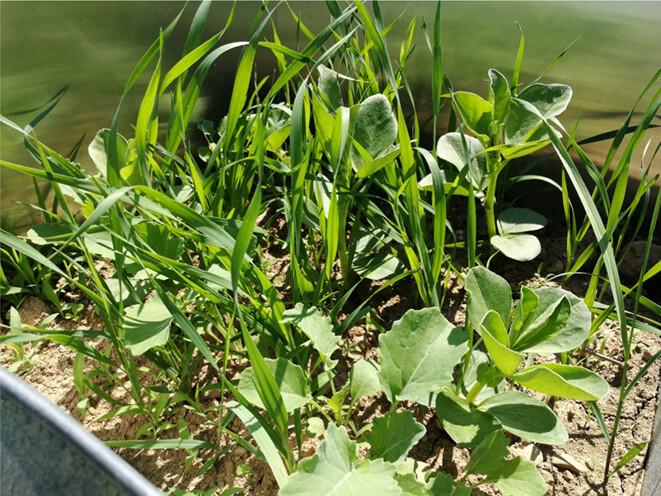Crops grown in mixtures show niche partitioning in spatial water uptake
IF 5.3
1区 环境科学与生态学
Q1 ECOLOGY
引用次数: 3
Abstract
More diverse plant communities generally produce more biomass than monocultures. This benefit of plant diversity is supposed to stem from resource partitioning of species in mixtures. Different plant species might use the resources spatially, temporally, or chemically in different ways. Along the same lines, for agricultural production crop mixtures outperform monocultures. Differences in vertical root distributions of crop species in mixtures could explain such higher yield. Here we used the stable isotopes of water and a Bayesian model to investigate the spatial water uptake patterns of six different crops species and how these patterns differ depending on the crop diversity. In addition, we calculated niche overlaps of water uptake as an indicator for belowground spatial niche partitioning, compared them among the different diversity levels, and linked them to productivity. The spatial water uptake pattern differed among crop species. The effect of crop diversity had a minor effect on water uptake but varied strongly depending on the crop species. Niche overlap in spatial water uptake was highest in monocultures and decreased strongly in mixtures. Furthermore, productivity in mixtures was higher compared to monoculture. Additionally, we showed that increased competition intensity leads to stronger changes in water uptake patterns. Synthesis. We found evidence for niche partitioning of spatial water uptake, and therefore complementary spatial root distribution, and higher productivity in crop mixtures compared to monocultures. Consequently, a more efficient use of soil resources in intercropping systems might explain their yield benefits.

混种作物在空间吸水方面表现出生态位分区
本文章由计算机程序翻译,如有差异,请以英文原文为准。
求助全文
约1分钟内获得全文
求助全文
来源期刊

Journal of Ecology
环境科学-生态学
CiteScore
10.90
自引率
5.50%
发文量
207
审稿时长
3.0 months
期刊介绍:
Journal of Ecology publishes original research papers on all aspects of the ecology of plants (including algae), in both aquatic and terrestrial ecosystems. We do not publish papers concerned solely with cultivated plants and agricultural ecosystems. Studies of plant communities, populations or individual species are accepted, as well as studies of the interactions between plants and animals, fungi or bacteria, providing they focus on the ecology of the plants.
We aim to bring important work using any ecological approach (including molecular techniques) to a wide international audience and therefore only publish papers with strong and ecological messages that advance our understanding of ecological principles.
 求助内容:
求助内容: 应助结果提醒方式:
应助结果提醒方式:


